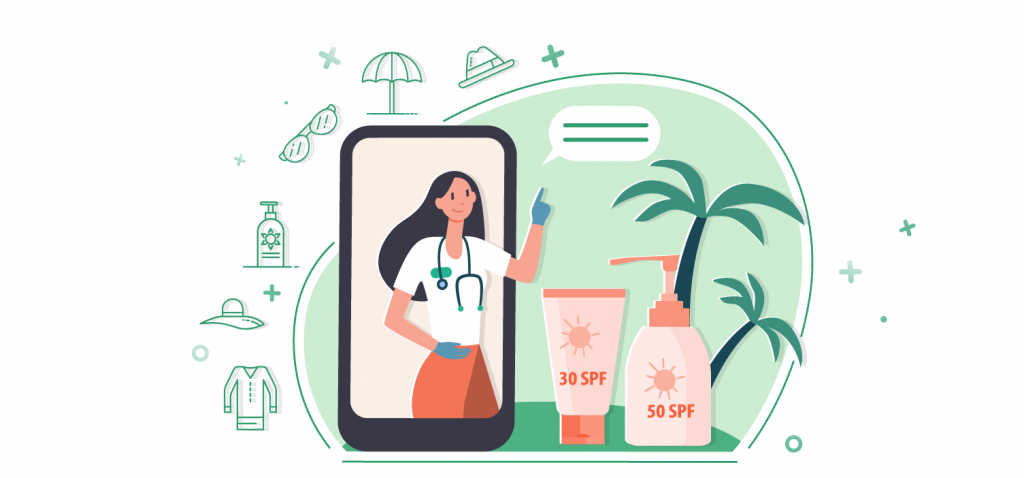Benefits of the Sun
The Sun supports life on Earth in its very essence, and is also the source of many health benefits for people. Sunlight is known to be an immediate mood-enhancer, as it increases the levels of serotonin in the brain, a hormone responsible for improved mood.
Exposure to sunlight by the skin in short periods is also known to promote Vitamin D synthesis, which improves the strength and health of bones.
Interestingly enough, sunlight is also thought of as being helpful towards sleep regulation, as it provides a stronger signal to the human body regarding the timely and regular production of melatonin. Sunlight helps us stay awake during the day, for a more restful sleep at night.
Risks of Sun Exposure
To put it bluntly, long-term and unprotected exposure to the Sun opens yourself up to a world of risk. The ultraviolet light emitted by the Sun can very easily damage your eyes, even without the direct exposure of looking straight at it. It is also thought that exposure to ultraviolet light radiation accelerates the development of cataracts.
Even short term exposure to the Sun can cause sun burns, which can permanently damage your skin over repeated incidences. “The sun’s ultraviolet (UV) rays can damage your skin in as little as 15 minutes.” – CDC. Some skin conditions caused by sun damage include:
- actinic/solar keratosis: This is the most common skin condition caused by sun exposure. Caused by damage over a number of years, it appears as rough, scaly patches on the areas of the skin with damage – usually the head and face.
- atypical moles: These are either new moles, or changes to existing moles. They can appear anywhere on the skin, in different sizes and colours.
- sunburn: Arguably the most well known side effect of sun exposure, sunburns appear as red, hot and sore skin. They can also start to flake and peel after a period of time.
- polymorphous light eruption: (PMLE) is a rash that is sometimes mistaken for a sunburn rash. It is an itchy or burning rash that occurs in people that are sensitive to the sun, after an extended period of exposure.
- sun poisoning: An extreme form of sunburn, the symptoms of sun poisoning typically begins similarly to the normal sunburn, which then progresses into more severe symptoms.
Aside from the common effects and risks of being in the sun, it is generally worse for some who have conditions that make them more susceptible to these conditions. These include:
- sun allergy / solar urticaria: This is a rare allergic reaction to sunlight that causes hives on the skin when it’s exposed to the sun. It can also result in other allergy symptoms that can each be treated with common over the counter medication. There are also treatments for sun allergy rashes if they are severe.
- sunscreen allergy: Allergic reactions to sunscreen may prevent you from using any to protect you from sun damage. It is however important to remember that it is essential to try to protect your skin, so you may need to look at an alternative option. Such as a cream with different ingredients, or protective clothing.
- xeroderma pigmentosum: Sometimes referred to as a sun sensitivity disease, XP is a genetic disorder that reduces your body’s ability to repair itself after being exposed to UV light. In some cases you can have a severe sunburn after just a few minutes in the sun.
In the case of a heat wave, for example, being out in the Sun increases the rate of dehydration and thus the likelihood of suffering from heat stroke. Sun safety education is particularly important in a country like the UK, where people are far more used to handling rainy and overcast days than uninterrupted sunshine.
There are plenty of benefits to sunlight, but how can we enjoy them without risking any of the adverse side effects?
Sun Safety Tips
The key to adequate sun safety is, like many other things, moderation. If you want to maximise the benefits of enjoying time in the sun, try to limit your time outdoors and in direct sunlight to 30-45 minute intervals, with breaks in the shade or indoors. Also, remember to use a generous amount of sunscreen, such as piz buin allergy, and re-apply it every 2 hours. Remember that even on overcast days, the Sun’s UV rays can penetrate the clouds and damage your skin!
To keep yourself from severe dehydration, try to drink at least 1 cup of water every hour, and if you’re exercising or in direct sunlight outdoors, don’t hesitate to up that number to 2 cups an hour. In the summer, do take the chance to spend some time soaking up the Sun, but remember to always take precautions and stay safe.
Even with all the precautions, you may still experience some mild issues from the sun, such as sunburn. If you do, there are treatments available. The most common sun rash/burn treatments come in the form of ointments.
With that being said, we hope to see you all on the beach for a healthy and enjoyable summer!
Healthera
Healthera operates a leading healthcare marketplace that provides patients with medicines, healthcare services and products through the largest digital platform of pharmacies and GPs in the UK, including national chains and independent providers. Download Healthera App to order NHS repeat prescription online!


